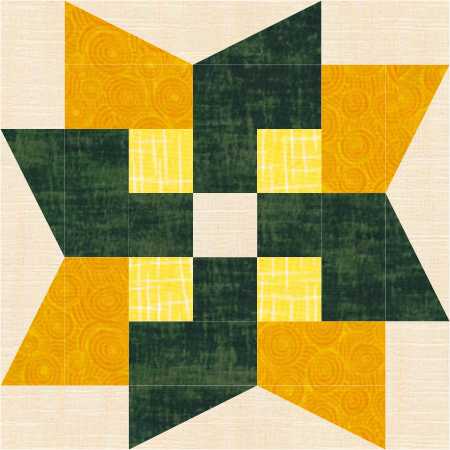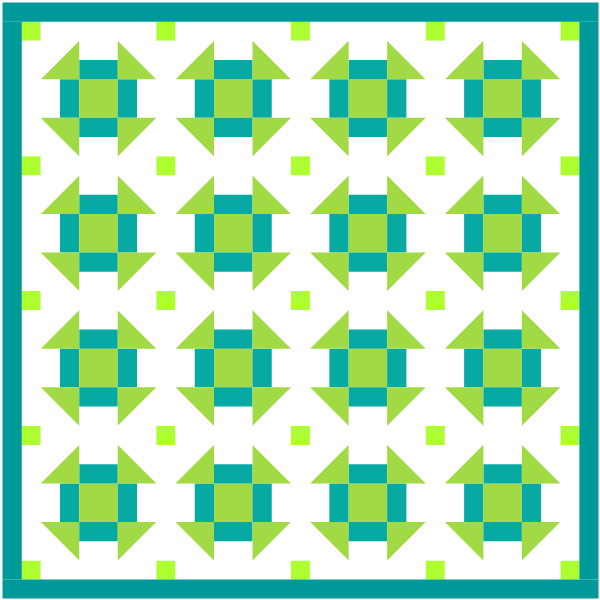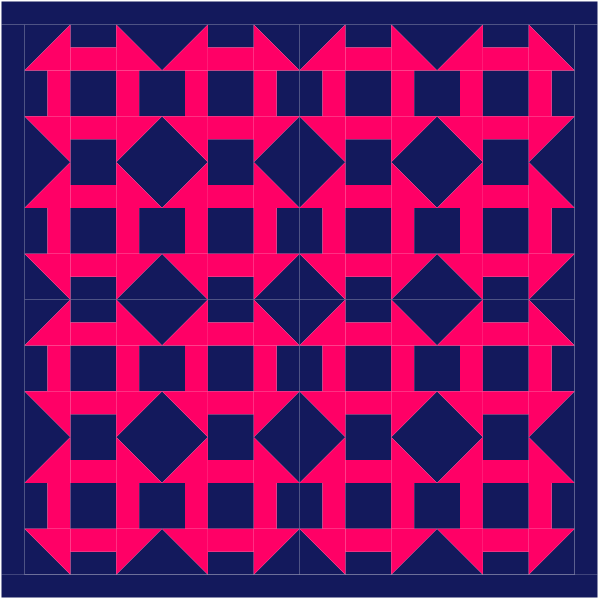
We have another fun block of the week. This time we discovered the Nebraska Windmill Block.

We discovered this block on the National Park Service’s board regarding a Quilt Discovery Experience. You can see this block and others here: https://www.nps.gov/home/planyourvisit/quilt-discovery-experience.htm
Here is what the National Park Service had to say about this block, which they called Nebraska Pinwheel: “Wheels represent movement. The pioneers depended on wheels to carry them across the plains.
For the homesteaders, wheels were vital to their lives. They were the basis of their transportation. Wheels were used in sawmills and in gristmills where grain was ground into flour or meal.
In the early 1900’s, windmills pumped water for livestock and made life on the homestead easier. Because of its importance to the homesteaders in their everyday lives, the wheel was often a favorite quilt pattern.
When the United States entered World War I in 1917, quilt making took on new significance. The government took all the wool produced for commercial use, and actively urged citizens to make quilts using the slogan, “Make Quilts-Save the Blankets for our Boys Over There.” As a result, many utilitarian quilts for home use were made. These quilts soon earned the nickname of, “Liberty Quilts.”
The block originated in 1977 with the Lincoln Quilters Guild. Here is what they have said about it: “In 1977, The Lincoln Quilters Guild (LQG) sponsored a contest to select a quilt block to honor the State of Nebraska. The contest was in conjunction with Quilt Symposium ’77: Fine Art, Folk Art, planned & hosted by LQG. The 85th Nebraska State Legislature passed Legislative Resolution Number One in January 1977 to designate the winning block as the Official Nebraska Block. The winning block, Nebraska Windmill, was designed by E.S. “Bud” Dunklau of Lincoln, NE. Bud & Carol Dunklau gave the original block pattern & rights to the pattern to LQG. LQG gave the original cloth block to the Nebraska State Historical Society.”
You can clearly see why the block became the official state block, as the green windmill blades, in my example, look like the shape of the state of Nebraska. Here is a slightly different coloring of the block.

You can create a striking quilt by just laying the blocks out in a horizontal layout.

The quilt takes on a different look when you add sashing and use the alternative coloring of the block.

Here are a few more quilt layouts for this block.





This block is fairly easy to cut out and sew together. You will have to see what creation you can come up using the Nebraska Windmill block. Post a picture on Instagram, or Facebook, and tag it with #BlueBearQuilts so we can see your creations.










 make the block wonky like this one made by Jennifer Dick of 42 Quilts.
make the block wonky like this one made by Jennifer Dick of 42 Quilts.






































